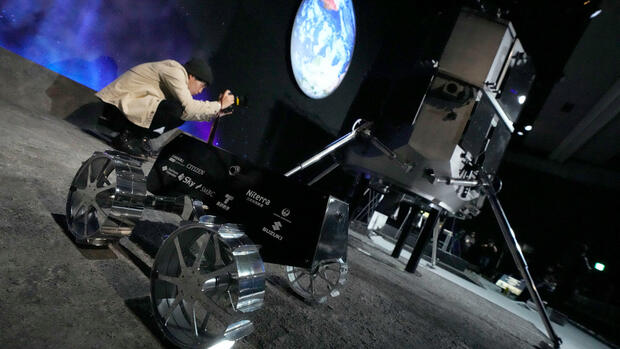In the run-up to the landing, the founder and boss of ispace had announced “the beginning of a new era of commercial lunar missions”.
(Photo: AP)
Tokyo The Japanese company ispace was initially unable to report the success of the planned first private moon landing on Tuesday evening. After the time of landing, the company was initially unable to provide any information as to whether the moon lander “Hakuto-R” touched down intact. “We have to assume that we couldn’t complete the landing on the lunar surface,” said Takeshi Hakamada, chief of ispace.
The lunar lander was on the final meters of its approach to land when ground control in Tokyo suddenly stopped receiving signals from it. As minute after minute passed, it became increasingly clear that the Monlander had probably crashed.
So far, only government programs could have successfully landed on the moon. Other private moon missions had previously failed.
The lander, 2.3 meters high and 2.6 meters wide with the landing legs extended, had carried international cargo to the moon, including a small United Arab Emirates rover and an even smaller two-wheeled robot. It was developed by the Japanese state space agency Jaxa and the Japanese toy manufacturer Tomy. Two American competitors, Astrobotic and Intuitive Machines, are also planning moon missions in the near future.
Takeshi Hakamada, founder and head of ispace, had announced in the run-up to the landing “the beginning of a new era of commercial lunar missions”. A Falcon 9 rocket from the US space company SpaceX by Elon Musk was launched in December from the Cape Canaveral cosmodrome in the US state of Florida and had “Hakuto-R” on the way to the moon. The start had previously been postponed several times.
Hakuto means “white rabbit” in Japanese – in Japanese mythology, it lived on the moon. The “R” stands for English reboot, restart. In order to carry less fuel, the lander had taken a longer, more energy-efficient route to the moon, using the gravity of the earth and the sun for propulsion.
More: How a Japanese company wants to make history on the moon
